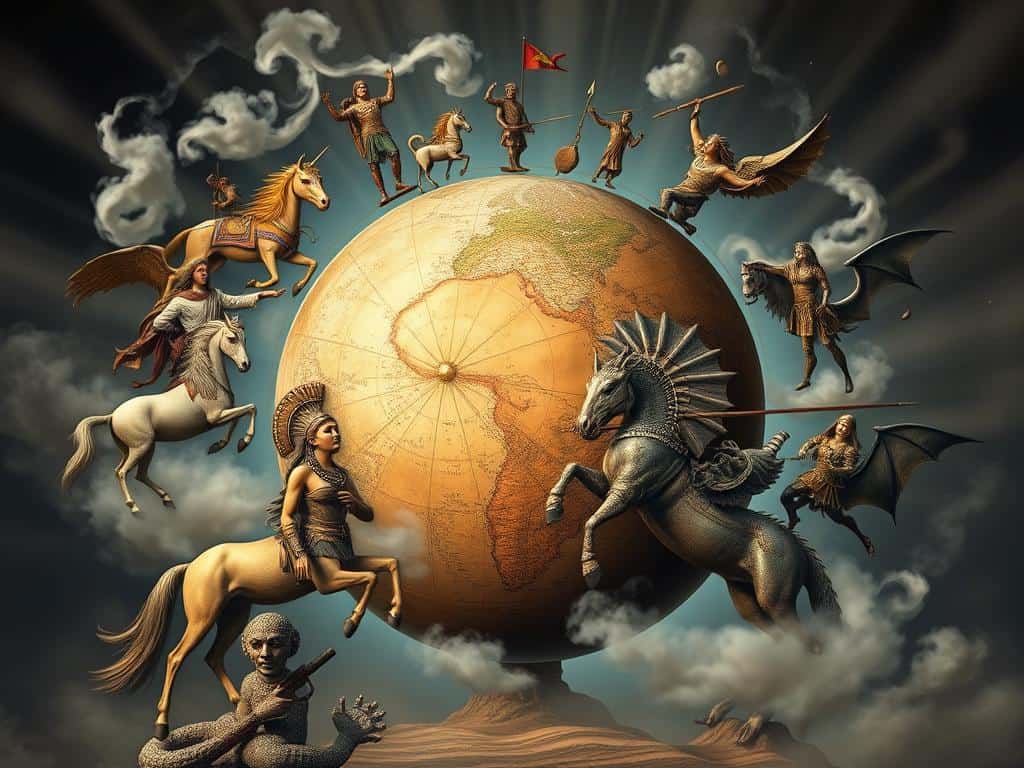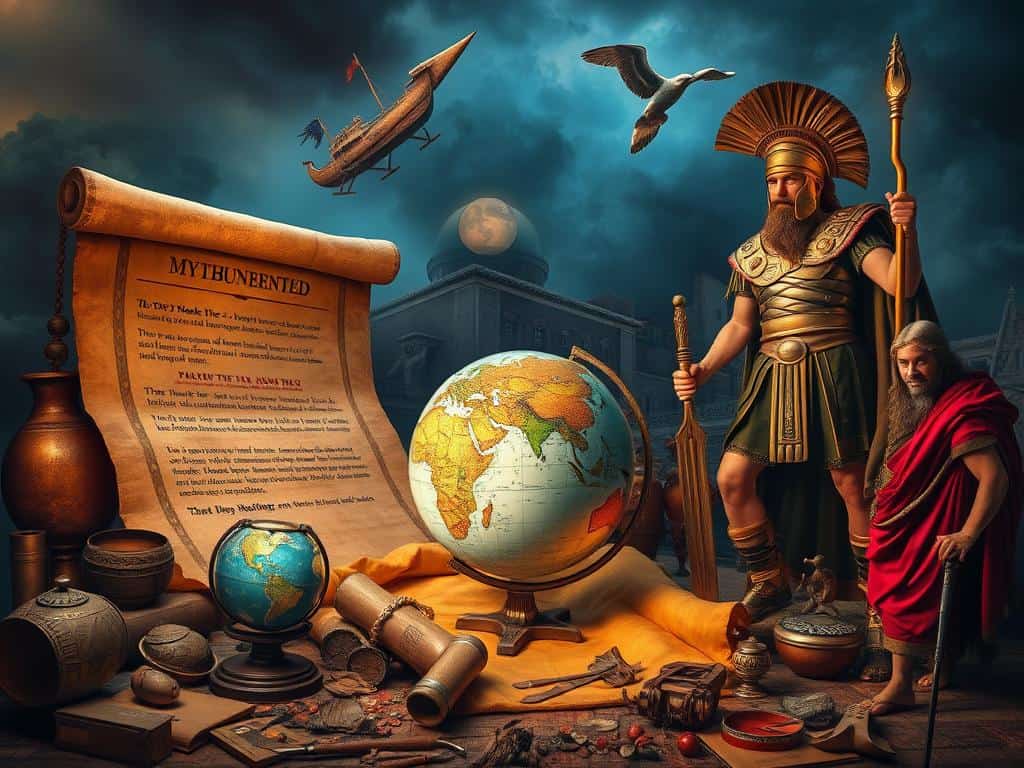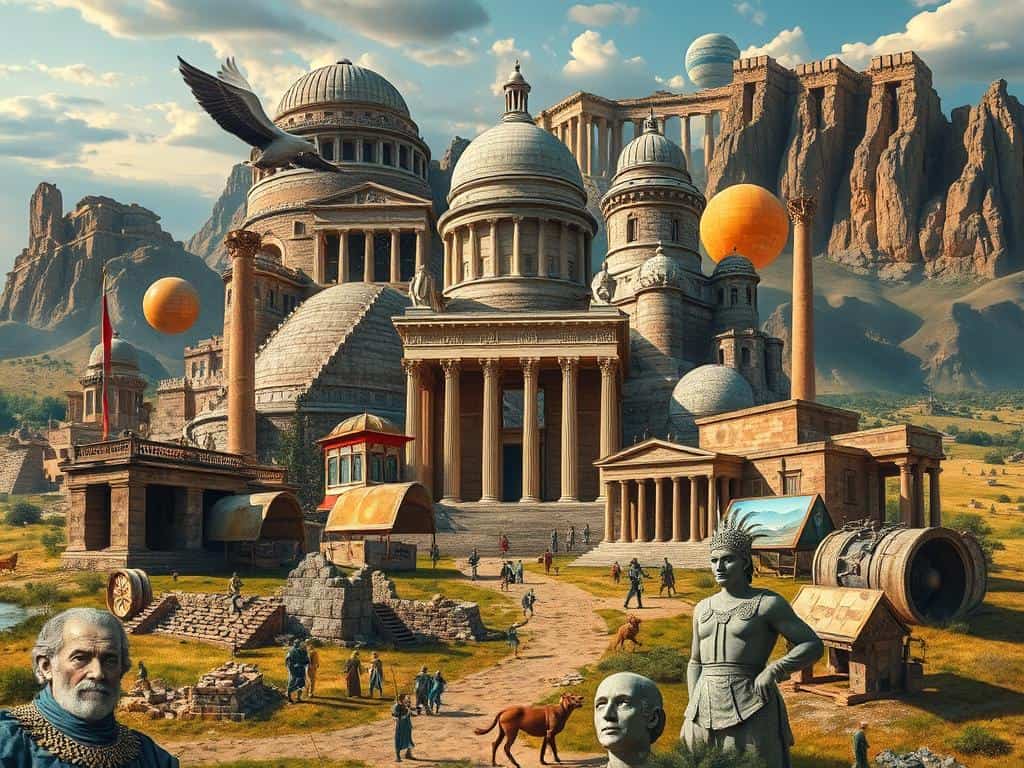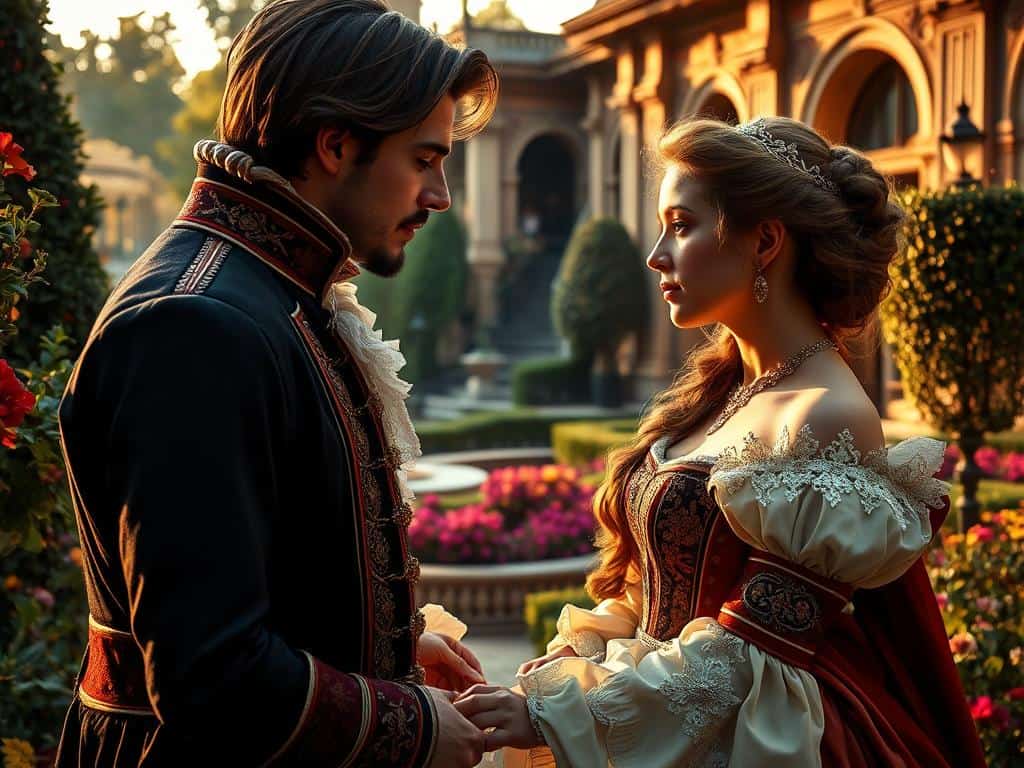As a kid, I loved hearing stories from my grandparents. They knew so much about history. One day, my grandfather told me a story about Catherine the Great. He said she died in a strange way, trying to be with a horse. I laughed, thinking it was a wild tale that had to be true.
But, it turns out, this was just one of many myths that have stuck around. These myths shape how we see important people and events from history.
Every time these myths are told, they grow stronger. They often hide the real history facts. For example, the myth that Marie Antoinette said “Let them eat cake” when people were hungry is another example. These stories, though interesting, change how we see history.
In this article, I want to uncover these myths. I want to give you the real facts. This way, we can understand history more accurately.
Key Takeaways
- Historical myths often distort our understanding of significant figures.
- Common legends, like Catherine the Great’s demise, are merely exaggerated tales.
- Beliefs such as the Earth being flat were not universally accepted in medieval societies.
- Marie Antoinette’s infamous quote is a celebrated myth lacking historical evidence.
- Recognizing these misconceptions can enhance our appreciation of factual history.
The Impact of Historical Myths on Our Understanding
Historical myths shape how we see history. They mix real facts with stories, creating views that affect our culture. These myths can be very powerful, sometimes hiding true history. For example, many think Christopher Columbus was the first to find America. But, Norse explorer Leif Erikson was there before him.
These myths change how we see important moments in history. They can also make us think differently about our culture. By looking into these myths, we learn more about history.
Common Historical Myths That Mislead Us
Many historical stories are filled with myths that don’t hold up to close scrutiny. These myths surround famous figures like Catherine the Great, the Flat Earth belief, and Marie Antoinette. They show how misconceptions can distort our view of history.
Catherine the Great and the Horse Myth
The myth about Catherine the Great and a horse is not true. It’s a story with no solid evidence. This myth hides her real achievements as a powerful leader. It also spreads false ideas about her reign.
The Flat Earth Myth During Columbus’ Time
It’s often said people thought the Earth was flat during Columbus’ time. But, ancient Greeks knew the Earth was round. Most people in Columbus’ era knew this too. So, the idea of a Flat Earth is not supported by facts.
Marie Antoinette’s Alleged Quote
The myth about Marie Antoinette saying “Let them eat cake” is not supported by history. Despite many searches, no proof of this quote exists. This myth not only misrepresents her but also distorts our understanding of the time.

Debunking Specific Historical Myths
Many historical stories are filled with myths that mix truth and fiction. This part aims to clear up three myths that have stuck around, even with evidence to the contrary. Knowing these myths helps us see our history more accurately.
The Great Wall of China Visibility
The myth that the Great Wall of China is visible from space is very common. But, astronauts have said it’s not true. This myth started with a mistake by a British astronaut. It shows how myths can change how we see history and the hard work behind famous landmarks.
Hitler’s Rise to Power Misunderstood
Many think Hitler took power by force in Germany. But, he actually won through democratic elections, using the Weimar Republic’s weaknesses. Knowing how he rose to power helps us understand how democracies can fail. It’s important to study these events to learn from history.
The Misconception of Viking Horned Helmets
The idea of Vikings wearing horned helmets is a myth. These helmets were actually practical and simple, not fancy. This myth has stuck in popular culture, hiding the true Viking history. Recognizing these myths helps us understand history better.

Understanding the Truth Behind Historical Myths
Myths have always shaped our view of history. It’s key to know the difference between fact and legend. This helps us understand the past better.
The Role of Education in Discerning Myths
Education teaches us to spot myths from real history. I learn how myths, like those about nature and religion, shape our memories. By looking closely at these stories, I find the truth hidden in myths.
This helps us see the whole picture. It shows how myths explain our culture and feelings.
Legends Versus Facts: A Historical Perspective
Legends mix with real events in many cultures. Myths of creation and the end of the world show how people try to make sense of their lives. Knowing why we believe these myths helps us value our beliefs more.
Seeing the difference between legends and facts is important. It lets us enjoy the stories and their deeper meanings.
Conclusion
Looking back, it’s clear how important it is to uncover the truth in our stories. By exploring history’s real facts, we see how myths have shaped our views. These myths, from different cultures, show our deep desire to understand the world.
But, it’s key to separate myths from real history. This helps us learn from the past more accurately. Every time we correct a myth, we get closer to knowing where we come from.
It’s vital to seek out the truth in history. This means questioning myths and legends. By doing so, we connect more deeply with our past and can have better discussions about it.
As we explore history’s depths, we must value accurate knowledge. This approach makes us appreciate history more. It also means our future will be built on solid facts, not just myths.



